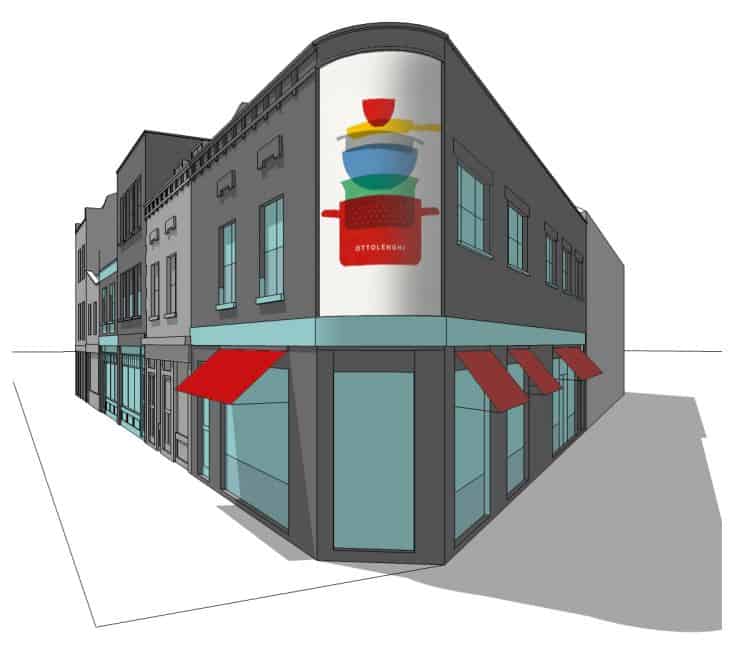16 Nov 2020
A Cluster of Ghost Signs Intrigue in Spitalfields’ Artillery Grounds
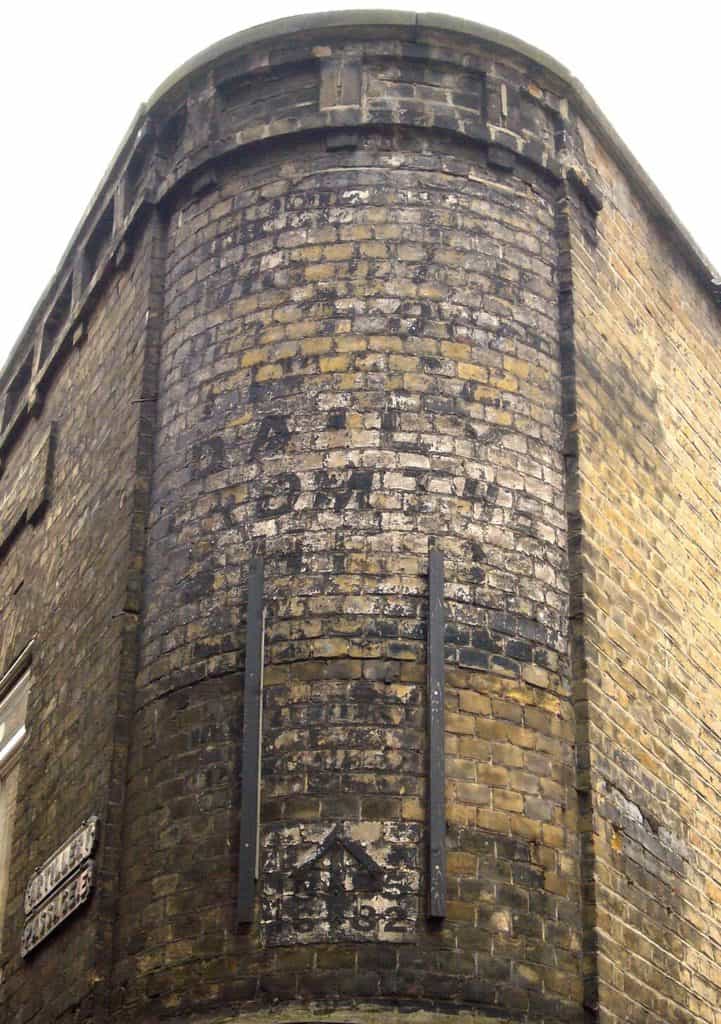
The four ghost signs that adorn what is now the Spitalfields branch of Ottolenghi have stimulated a degree of intrigue in recent years and here I’ll set out what I’ve managed to ascertain so far, with the hope that more information might surface as a result.

Artillery Lane (formerly Street)
The corner in question is found at the junction of what are now known as Artliiery Passage (the alleyway) and Artillery Lane. These names (and nearby Gun Street) were given to the streets by developers to reference the area’s former use as weaponry practise grounds, established by Henry VIII.
We can see the cast iron street name plate for Artillery Lane in Philip Marriage’s 1980s photograph but, by the time he revisited in 2011 this had disappeared, leaving the remnant of a hand-painted sign from an earlier era of the street being known as Artillery Street.
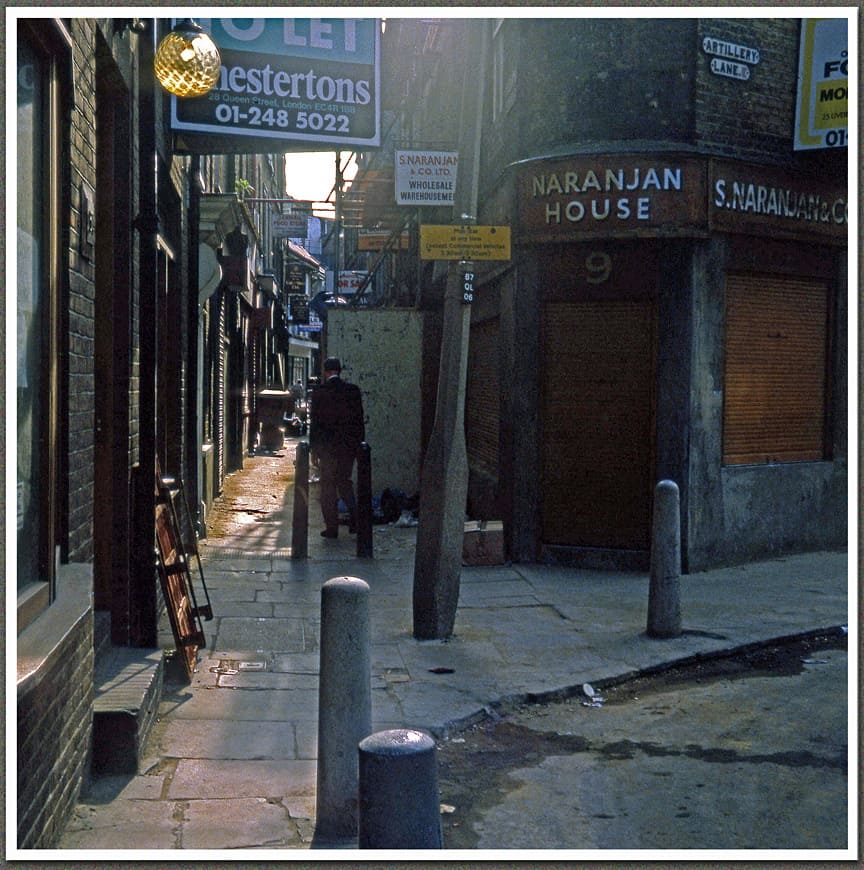
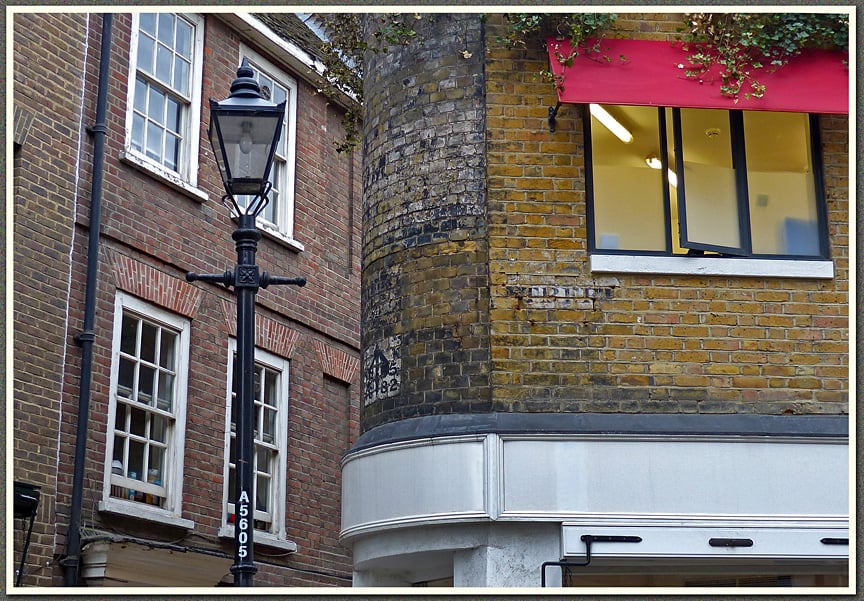
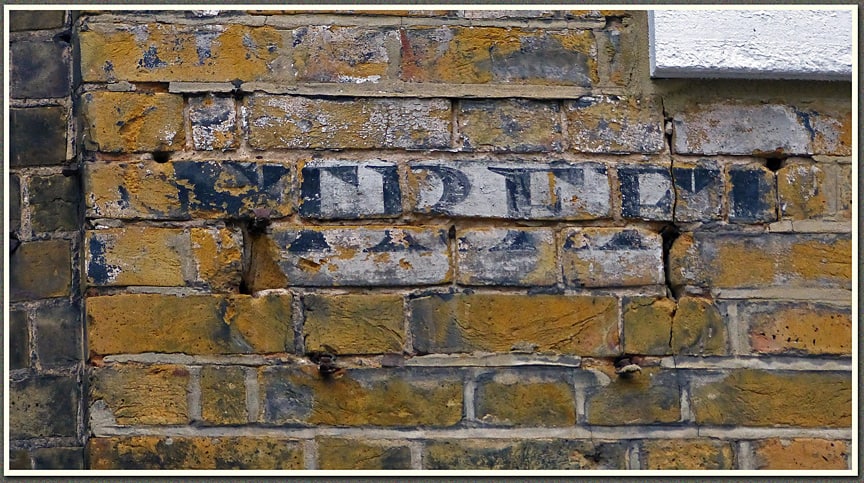
The cast iron sign would date from between 1856, when the original ten London postal districts were created, and 1917 when the numerical designations were added e.g. E1. It isn’t clear when the transition from Street to Lane took place. From ‘The Survey of London: Volume 27, Spitalfields and Mile End New Town, London, 1957’, Chapter XIV – Artillery Passage and South Side of Artillery Lane:
“In the seventeenth and eighteenth centuries Artillery Passage was commonly known as Smock Alley and the eastern part of Artillery Lane outside the Old Artillery Ground was usually known as Raven Row, though it was sometimes also known as Smock Alley and sometimes as Artillery Street or Lane.”
The Survey of London: Volume 27
Although the Artillery Lane cast iron street name plate has been lost, the corresponding one for Artillery Passage has survived.
There is also the remnant of a painted sign for Artillery Passage between the two most visible ghost signs on the curved portion of wall on the corner.
Boundary Marker

On the lower portion of the curved wall is boundary marker, designating the border of the former Old Artillery Grounds and Spitalfields. There are two painted dates straddling the metal arrow. They are 1682 when the Old Artillery Grounds designation was established in the process of leasing the land for development, and 1885, which is when the area became a parish. The Waymarking site has more on this boundary marker with links to more detailed information, as does page 3 of this document.
Dairy

Above, and the main point of intrigue for me, is a very faded ghost sign which I photographed in 2007 before it largely became covered by the ivy tumbling from the roof. To date this has been transcribed as follows.
…
… MILK
1/4d QUAt*
TWICE
DAILY
FROM THE
SHED
*This is the price, indicating that it was one quarter of a penny for one quarter of a gallon of milk i.e. one penny per gallon.
Street directories reveal that in 1895 Mrs Jane Davies was operating a dairy at 9 Artillery Passage. In 1898 Isaac Kammonovitz opened his dairy at 50 Artillery Lane, although this is presumably the same premises, and then in 1910 the Artillery Passage address is listed as a confectioner by the name of Morris Kasansky.
The milking of cows in the area is documented in the story of Isabelle Barker on the Spitalfields Life blog:
“We had a dairy. The cows came in by train from Essex to Liverpool St and we kept them while they were in milk. Then they went to the butchers. The children would buy a cake at Oswins the baker around the corner and then come and buy milk from us.”
It would be interested to determine which of the two known proprietors, or possibly someone else, commissioned the original sign, which may be revealed by decyphering the very top line of text. From what I can make out the likely letters there don’t match either of the two names currently in the running, although it isn’t certain that the top line is a name.
***This article was made possible by Ghostsigns’ patrons on Patreon. I thank each and every one of you for your continued support. For this article, special thanks also to Philip Marriage and Roy Reed for the detailed supporting research.***
PS. Another Close Shave
In 2015 I was approached by the firm carrying out the works for the Ottolenghi restaurant. They were interested in having artwork painted on the curved wall in a ‘ghosted’ style, based on the design below. It never came to anything, perhaps due to planning restrictions, and so for now the myriad ghost signs on the wall live to fade another day.
